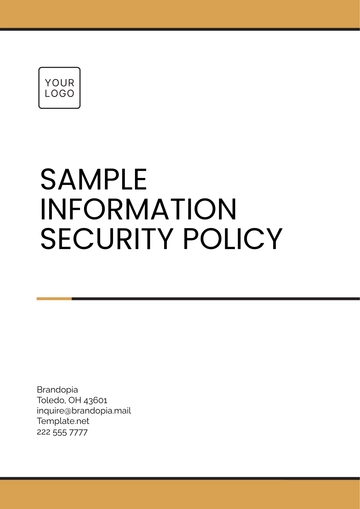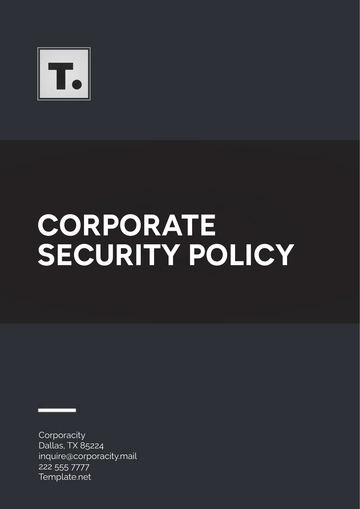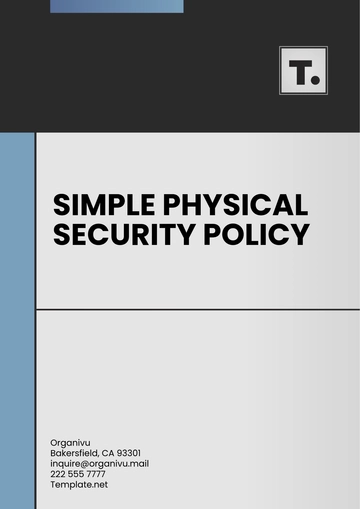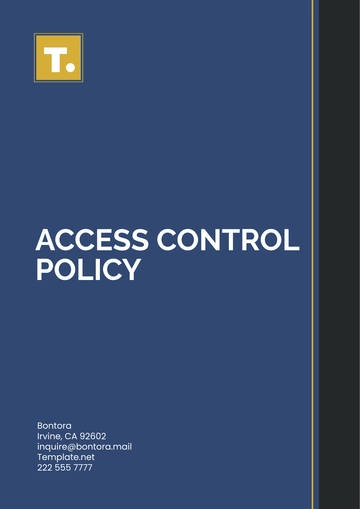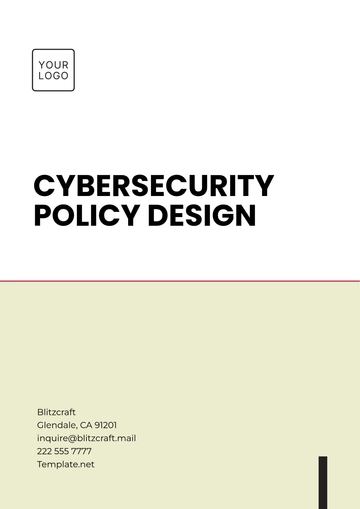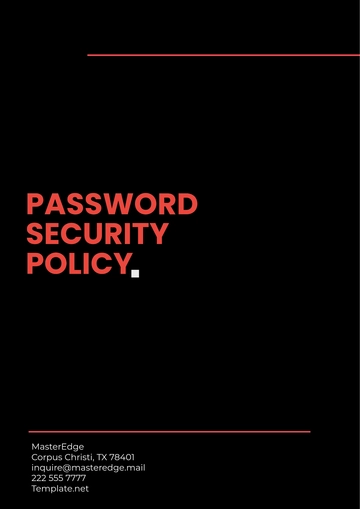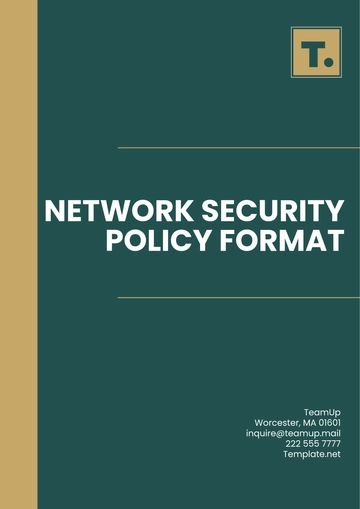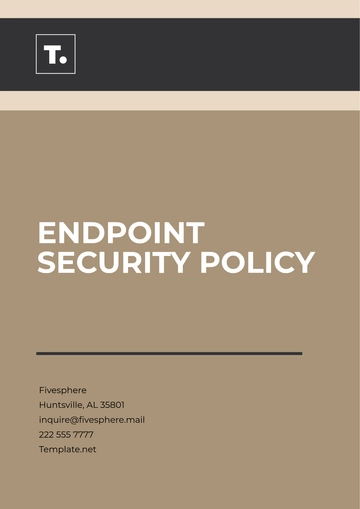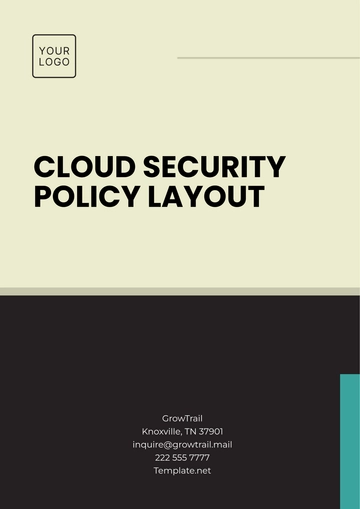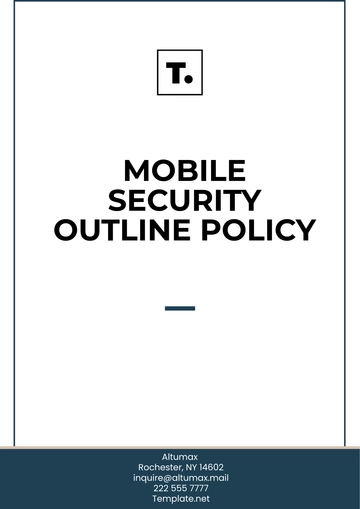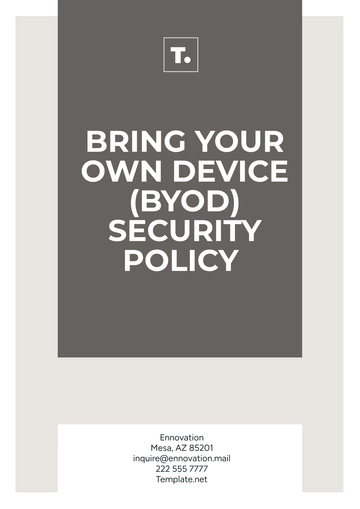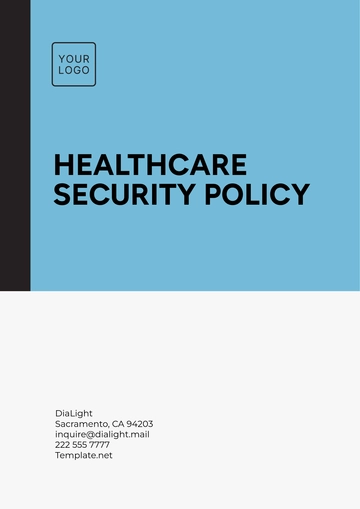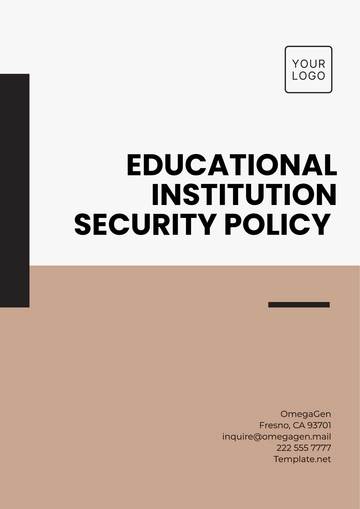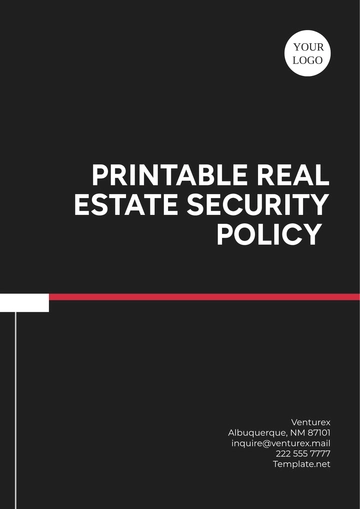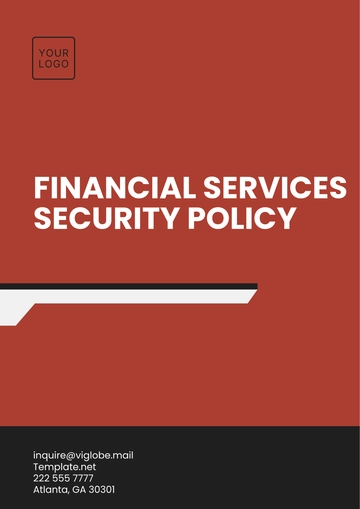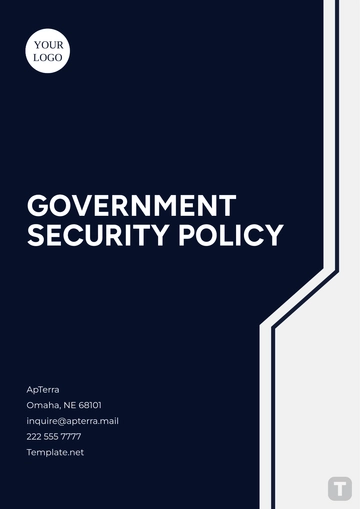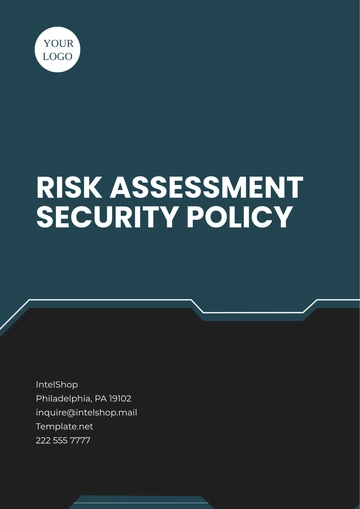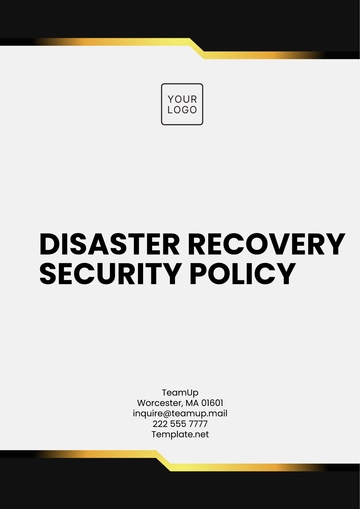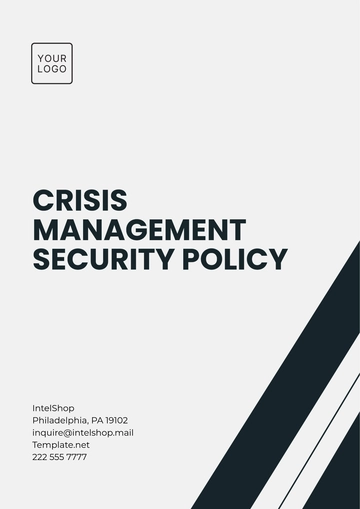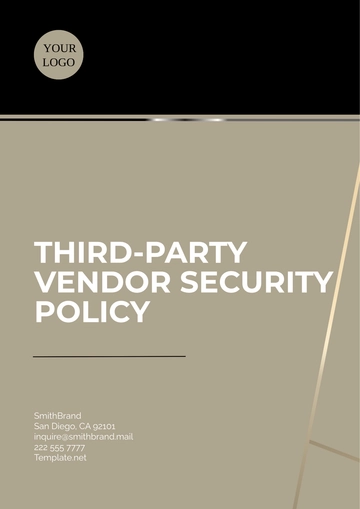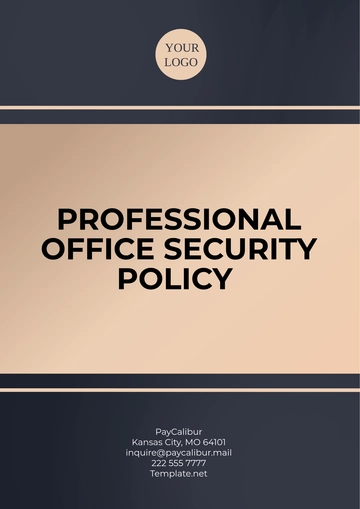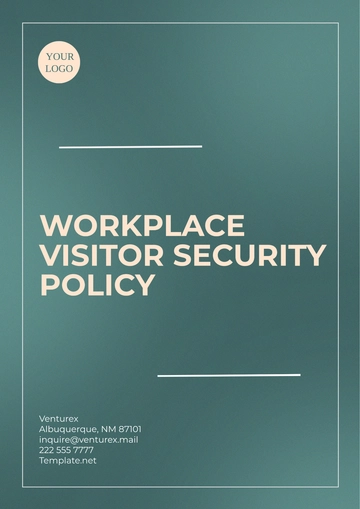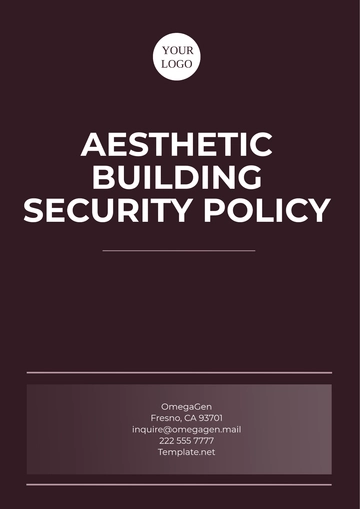Free Nursing Home Security Policy
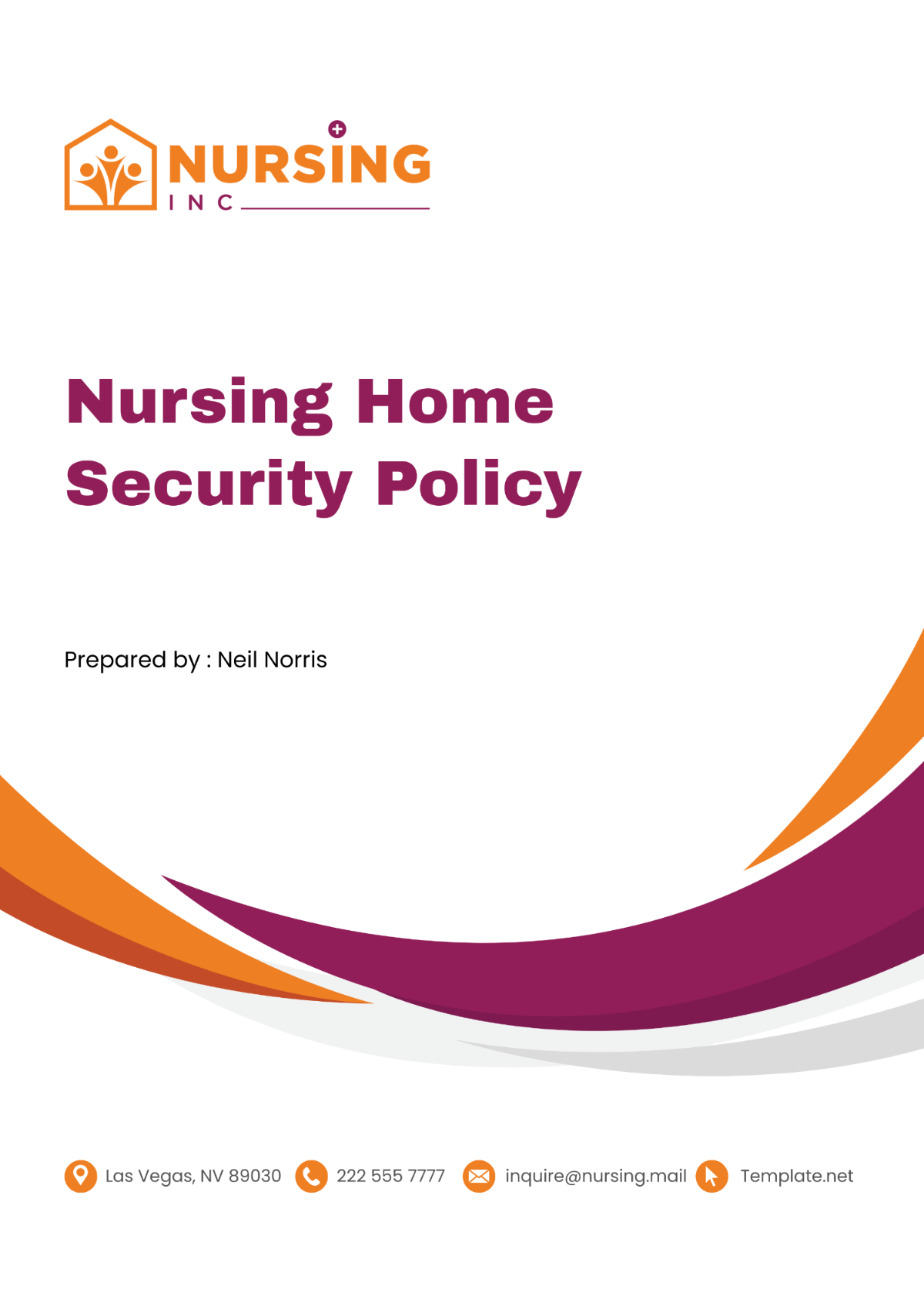
I. Introduction
A. Purpose
The purpose of this security policy is to establish guidelines and procedures to ensure the safety and security of residents, staff, and visitors within [Your Company Name] nursing home facilities. By implementing comprehensive security measures, we aim to create a secure environment that promotes the well-being and peace of mind of all individuals on our premises.
B. Scope
This policy applies to all employees, contractors, visitors, and residents within [Your Company Name] nursing homes. It encompasses all aspects of security, including access control, physical security, information security, security awareness training, incident response, compliance, and enforcement. It is the responsibility of every individual associated with [Your Company Name] to adhere to the provisions outlined in this policy to maintain a safe and secure environment.
C. Policy Review
To ensure the effectiveness and relevance of this security policy, it will be subject to annual review by the Security Committee. Any necessary updates or modifications will be made to address emerging security threats, changes in regulations, or feedback from stakeholders. Additionally, this policy may be revised as needed in response to significant security incidents or developments in the field of security management.
II. Access Control
A. Entry Procedures
Entry into [Your Company Name] nursing home facilities will be regulated to prevent unauthorized access and maintain a secure environment. The following procedures will be implemented:
Procedure | Description |
|---|---|
Front Desk Check-In | All visitors must check in at the front desk upon arrival. They will be required to provide valid identification and sign in before being granted access to resident areas. |
Visitor Badges | Upon check-in, visitors will be issued visitor badges that must be visibly displayed at all times while on the premises. Badges will indicate the visitor's name, date of visit, and the area they are authorized to access. |
Staff Identification | All staff members will be provided with identification badges that must be worn visibly at all times while on duty. These badges will indicate the staff member's name, position, and photograph for easy identification. |
B. Visitor Management
Effective visitor management is essential for maintaining security and protecting the well-being of residents and staff. The following measures will be implemented:
Measure | Description |
|---|---|
Visitor Registration | Visitors must register at the front desk upon arrival and provide valid identification. They will be required to sign in and out, indicating the purpose of their visit and the resident they are visiting. |
Restricted Access | Access to resident rooms may be restricted based on resident preferences or security concerns. Visitors will only be allowed access to authorized areas and must be accompanied by staff when visiting resident rooms. |
Visitor Escort | Visitors may be escorted by staff members while on the premises to ensure compliance with security protocols and provide assistance as needed. |
C. Employee Access
Employee access to [Your Company Name] nursing home facilities will be regulated to prevent unauthorized entry and protect sensitive areas. The following measures will be implemented:
Measure | Description |
|---|---|
Access Control System | Access to the facility will be controlled through electronic access control systems, which may include keycard readers or biometric scanners. Employees will be granted access to designated areas based on their job responsibilities and security clearance. |
Role-Based Access | Access privileges will be assigned based on the employee's role within the organization. Staff members will only be granted access to areas necessary for performing their job duties, such as resident rooms, common areas, or administrative offices. |
Access Logs | Access control systems will maintain logs of employee entry and exit times, which will be monitored for unauthorized access attempts or suspicious activity. Any discrepancies or anomalies will be investigated promptly by security personnel. |
III. Physical Security
A. Facility Perimeter
Securing the perimeter of [Your Company Name] nursing home facilities is essential for preventing unauthorized access and ensuring the safety of residents and staff. The following measures will be implemented:
Measure | Description |
|---|---|
Fencing | The facility perimeter will be enclosed by sturdy fencing to prevent unauthorized entry and deter trespassers. Fencing materials and design will be selected to maximize security while maintaining an aesthetically pleasing appearance. |
Security Cameras | Surveillance cameras will be strategically positioned along the perimeter to monitor activity and detect potential security threats. Cameras will be equipped with night vision capabilities and motion sensors to provide comprehensive coverage at all times. |
Patrols | Security personnel will conduct regular patrols around the facility perimeter to deter unauthorized access and respond promptly to security incidents. Patrol schedules and routes will be varied to maximize effectiveness and prevent predictability. |
B. Interior Security
Maintaining robust interior security measures is essential for safeguarding residents, staff, and property within [Your Company Name] nursing home facilities. The following measures will be implemented:
Measure | Description |
|---|---|
Electronic Locks | Interior doors leading to resident areas will be equipped with electronic locks to restrict access to authorized personnel only. Access codes or keycards may be required to unlock doors, providing an additional layer of security. |
Security Cameras | Surveillance cameras will be installed throughout the facility to monitor common areas, corridors, and other high-traffic areas. Cameras will be strategically positioned to provide maximum coverage and visibility, helping to deter criminal activity and facilitate timely response to security incidents. |
Panic Alarms | Panic alarm buttons will be installed in key locations throughout the facility to allow staff members to quickly summon assistance in the event of an emergency or security threat. Alarm activations will trigger an immediate response from security personnel, who will investigate the situation and provide assistance as needed. |
C. Emergency Preparedness
Being prepared to respond effectively to emergencies is essential for ensuring the safety and well-being of residents and staff within [Your Company Name] nursing home facilities. The following measures will be implemented:
Measure | Description |
|---|---|
Emergency Exits | Emergency exits will be clearly marked with illuminated exit signs and kept free of obstructions at all times. Staff members will receive training on the location and proper use of emergency exits, and regular drills will be conducted to ensure readiness in the event of an evacuation. |
Emergency Lighting | Emergency lighting will be installed throughout the facility to ensure visibility and facilitate safe evacuation in the event of a power outage or other emergency situation. Emergency lights will be equipped with battery backup systems to provide illumination even in the absence of external power sources. |
Evacuation Protocols | Staff members will receive training on emergency evacuation protocols, including procedures for safely evacuating residents with mobility impairments or special needs. Evacuation routes will be clearly marked, and designated assembly areas will be established outside the facility for accountability and coordination during evacuations. |
IV. Information Security
A. Resident Confidentiality
Protecting the confidentiality of resident information is paramount to maintaining trust and compliance with privacy regulations. [Your Company Name] is committed to safeguarding resident records and personal data through the following measures:
Measure | Description |
|---|---|
Confidentiality Policies | Clear policies and procedures will be established to govern the handling and storage of resident records and personal information. Employees will be required to adhere to these policies at all times to ensure compliance with privacy regulations and maintain the confidentiality of resident data. |
Secure Storage | Resident records and personal information will be stored securely in locked filing cabinets or electronic databases with restricted access. Access to resident records will be limited to authorized personnel with a legitimate need to know, and encryption or password protection will be used to prevent unauthorized access to electronic records. |
Data Encryption | Electronic health records and other sensitive information will be encrypted to protect against unauthorized interception or access. Encryption algorithms and key management practices will comply with industry standards and regulatory requirements to ensure the security and integrity of resident data. |
B. Data Backup
Regular backups of electronic records will be performed to prevent loss of critical information and facilitate recovery in the event of data loss or corruption. [Your Company Name] will implement the following backup procedures:
Measure | Description |
|---|---|
Regular Backup Schedule | Electronic records, including resident health records, administrative files, and other critical data, will be backed up regularly according to a predetermined schedule. Backup frequency and retention periods will be established based on the importance and sensitivity of the data, with more frequent backups for mission-critical systems and longer retention periods for archival data. |
Offsite Storage | Backup copies of electronic records will be stored securely offsite to protect against data loss due to theft, fire, or other disasters. Offsite storage facilities will be equipped with appropriate security measures, such as access controls, surveillance cameras, and environmental controls, to ensure the integrity and availability of backup data. |
Data Recovery Procedures | Procedures will be established for restoring data from backup in the event of a data loss incident. Trained personnel will be designated to oversee the data recovery process, including verifying backup integrity, restoring data to the appropriate systems, and performing validation tests to ensure data accuracy and completeness. |
V. Security Awareness Training
A. Staff Training
Effective security awareness training is essential for ensuring that employees understand their roles and responsibilities in maintaining a secure environment. [Your Company Name] will provide comprehensive training to all staff members, including:
Training Component | Description |
|---|---|
Security Policies | Training sessions will cover [Your Company Name]'s security policies and procedures, including access control, physical security, information security, incident response, and compliance requirements. Employees will learn how to identify security risks and take appropriate action to mitigate them, as well as the consequences of non-compliance with security policies. |
Security Best Practices | Staff members will receive guidance on security best practices for protecting sensitive information, such as safeguarding passwords, avoiding phishing scams, and recognizing social engineering tactics. Training will emphasize the importance of maintaining vigilance and following established security protocols to prevent security breaches and unauthorized access to resident data. |
Incident Response | Training will include instruction on how to respond to security incidents, including reporting procedures, emergency response protocols, and escalation procedures. Staff members will learn how to recognize signs of a security breach or suspicious activity and take immediate action to mitigate the impact and minimize risk to residents and staff. |
B. Resident and Visitor Education
Residents and visitors play a vital role in maintaining a secure environment by following established security protocols and reporting any concerns or suspicious activity. [Your Company Name] will provide education and awareness materials to residents and visitors, including:
Education Material | Description |
|---|---|
Security Information | Residents and visitors will receive information on [Your Company Name]'s security measures and how they contribute to maintaining a safe and secure environment. Information will be provided in multiple formats, including brochures, posters, and digital displays, to ensure accessibility for all individuals. |
Reporting Procedures | Educational materials will include instructions on how to report security concerns or suspicious activity to staff members or security personnel. Residents and visitors will be encouraged to report any unusual or concerning behavior promptly to ensure timely response and resolution. |
Security Awareness Tips | Tips and guidelines for staying safe and secure while on the premises will be provided to residents and visitors. Topics may include personal safety tips, fraud prevention strategies, and emergency response procedures to empower individuals to take an active role in their own security and well-being. |
VI. Incident Response
A. Reporting Procedures
Prompt reporting of security incidents is crucial for mitigating risks and minimizing the impact on residents, staff, and visitors. [Your Company Name] will establish clear reporting procedures to ensure that all security incidents are documented and addressed in a timely manner:
Procedure | Description |
|---|---|
Incident Reporting Form | Employees, residents, and visitors will be provided with a standardized incident reporting form to document security incidents. The form will include fields for capturing details such as the date, time, location, nature of the incident, individuals involved, and any actions taken in response. |
Reporting Channels | Multiple reporting channels will be available to facilitate timely reporting of security incidents. Employees may report incidents to their supervisor, the security department, or designated incident response personnel. Residents and visitors may report incidents to staff members or through designated communication channels, such as a dedicated hotline or email address. |
Timely Notification | Security incidents will be reported promptly to appropriate personnel for investigation and response. Incident reports will be reviewed and acted upon within a specified timeframe to ensure that necessary corrective actions are taken to address the incident and prevent recurrence. |
B. Investigation and Resolution
Thorough investigation and resolution of security incidents are essential for identifying root causes, implementing corrective actions, and preventing future occurrences. [Your Company Name] will establish comprehensive procedures for investigating and resolving security incidents:
Procedure | Description |
|---|---|
Incident Investigation | Security incidents will be investigated promptly by trained personnel to determine the cause and extent of the incident. Investigations may involve interviews with witnesses, review of surveillance footage, examination of physical evidence, and analysis of electronic records to gather relevant information and establish a timeline of events. |
Root Cause Analysis | Root cause analysis will be conducted to identify underlying factors contributing to the security incident. This may include examining organizational processes, system vulnerabilities, human factors, and external influences to determine the root cause and develop effective corrective actions. |
Corrective Action Planning | Based on the findings of the investigation and root cause analysis, corrective actions will be developed and implemented to address identified vulnerabilities and mitigate future risks. Corrective actions may include updating security policies and procedures, enhancing security controls, providing additional training to staff, or making physical improvements to facilities to prevent similar incidents from occurring in the future. |
VII. Compliance and Enforcement
A. Compliance Monitoring
Ensuring compliance with security policies and procedures is essential for maintaining a secure environment and protecting the confidentiality, integrity, and availability of resident information. [Your Company Name] will implement robust compliance monitoring measures to assess adherence to security policies and identify areas for improvement:
Measure | Description |
|---|---|
Compliance Audits | Regular audits and inspections will be conducted to assess compliance with security policies and procedures. Audits may include reviews of access logs, physical security assessments, vulnerability scans, and interviews with staff to evaluate adherence to established security protocols and identify areas for improvement. |
Risk Assessments | Periodic risk assessments will be conducted to identify and prioritize security risks and vulnerabilities within [Your Company Name] nursing home facilities. Risk assessments will consider factors such as the likelihood and potential impact of security incidents, regulatory requirements, industry best practices, and emerging threats to inform decision-making and resource allocation for security initiatives. |
Corrective Action Tracking | Corrective actions resulting from compliance audits and risk assessments will be tracked and monitored to ensure timely implementation and effectiveness. Action plans will be developed to address identified deficiencies, and progress will be monitored through regular follow-up and review to verify completion and effectiveness of corrective measures. |
B. Enforcement
Enforcement of security policies and procedures is essential for promoting accountability and maintaining a culture of security within [Your Company Name] nursing home facilities. [Your Company Name] will establish clear guidelines for enforcing security policies and procedures:
Measure | Description |
|---|---|
Disciplinary Actions | Non-compliance with security policies and procedures may result in disciplinary action, up to and including verbal warnings, written reprimands, suspension, or termination of employment, depending on the severity and frequency of the violation. Disciplinary actions will be applied consistently and fairly, following established HR policies and procedures. |
Training and Education | Repeat offenders or individuals requiring additional support may be provided with targeted training and education to reinforce security awareness and improve compliance with security policies and procedures. Training may include refresher courses, one-on-one coaching, or participation in security awareness campaigns to address specific areas of concern or misunderstanding. |
Performance Metrics | Key performance indicators (KPIs) related to security compliance and enforcement will be established and monitored to track progress and measure the effectiveness of security initiatives. Metrics may include compliance audit results, incident response times, training completion rates, and disciplinary actions taken to ensure alignment with organizational goals and objectives for security management. |
VIII. Policy Revision History
A. Version Control
Maintaining an accurate and up-to-date record of policy revisions is essential for tracking changes and ensuring that all stakeholders are working with the most current version of the security policy. [Your Company Name] will implement version control measures to manage policy revisions effectively:
Measure | Description |
|---|---|
Version Numbering | Each version of the security policy will be assigned a unique version number to differentiate it from previous and subsequent versions. Version numbers will follow a standardized format, such as "vX.X," where "X.X" represents the major and minor version numbers, respectively. |
Revision History Log | A revision history log will be maintained to document changes made to the security policy over time. The log will include details such as the date of each revision, the version number, a summary of changes, and the name of the individual or committee responsible for the revision. |
Distribution of Updates | Updated versions of the security policy will be distributed to all relevant stakeholders, including employees, contractors, residents, and visitors, to ensure that everyone is aware of and adheres to the latest policies and procedures. Distribution methods may include email notifications, posting on internal portals, or physical distribution of printed copies. |
IX. Contact Information
For questions or concerns regarding this security policy, please contact:
[Your Name]
[Your Position]
[Your Company Name]
[Your Company Email]
[Your Company Address]
In case of emergency, please contact:
Emergency Contact Name: [Emergency Contact Name]
Emergency Contact Number: [Emergency Contact Number]
For security-related incidents or concerns, please contact:
Security Department
[Security Department Email]
[Security Department Number]
For reporting compliance issues or violations, please contact:
Compliance Officer
[Compliance Officer Email]
[Compliance Officer Number]
For general inquiries or feedback, please contact:
Customer Service
[Customer Service Email]
[Customer Service Number]
- 100% Customizable, free editor
- Access 1 Million+ Templates, photo’s & graphics
- Download or share as a template
- Click and replace photos, graphics, text, backgrounds
- Resize, crop, AI write & more
- Access advanced editor
Ensure safety with the Nursing Home Security Policy Template from Template.net. Editable and customizable, it establishes guidelines for maintaining a secure environment for residents and staff. Tailor it effortlessly using our Ai Editor Tool for personalized policies. Enhance security measures and protect against potential threats with this essential template.
You may also like
- HR Policy
- Restaurant Policy
- Company Policy
- Accounting Policies and Procedures
- Website Policy
- Privacy Policy
- Safety Policy
- School Policy
- IT and Software Policy
- Law Firm Policy
- Construction Policy
- Interior Design Policy
- Travel Agency Policy
- Education Academic Policy
- Security Policy
- Real Estate Policy
- Expense Policy
- Software Policy

